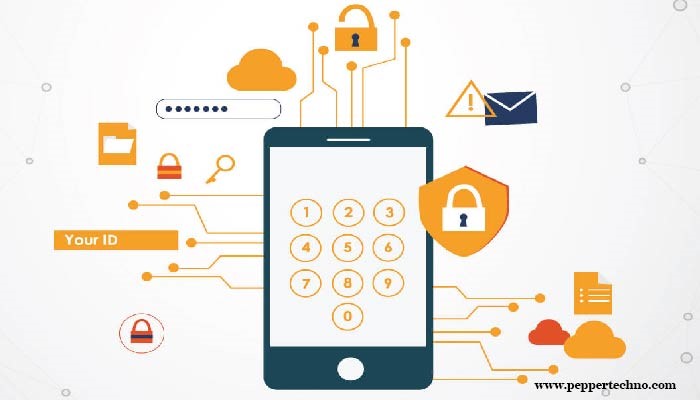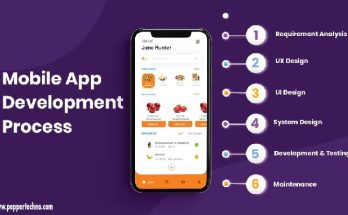Comprehensive Security Measures for Apps: Safeguarding Digital Assets in an Evolving Threat Landscape
We are discussing here Comprehensive Security Measures for Apps in detail. In an increasingly interconnected world, the security of mobile applications (apps) is paramount. With cyber threats evolving rapidly, developers must implement comprehensive security measures to safeguard sensitive data and protect users from potential breaches. In this article, we’ll explore a range of security measures for apps that app developers can implement to enhance the resilience and integrity of their applications.

Understanding the Importance of Comprehensive App Security
App security encompasses a wide range of practices, protocols, and technologies designed to protect against unauthorized access, data breaches, and other security threats. Comprehensive app security goes beyond basic encryption and authentication measures, addressing vulnerabilities across the entire development lifecycle. By prioritizing security from the outset, developers can build trust with users, mitigate risk, and avoid costly security incidents down the line.
1. Secure Development Practices
The foundation of comprehensive app security begins with secure development practices. Developers should follow industry-standard coding practices, such as secure coding guidelines and principles of least privilege, to minimize the risk of introducing vulnerabilities into their codebase. Additionally, implementing secure coding frameworks and tools, such as OWASP’s Top Ten, can help identify and remediate common security flaws early in the development process.
2. Data Encryption and Storage
Data encryption is essential for protecting sensitive information, such as user credentials, personal identifiable information (PII), and financial data, from unauthorized access. Developers should implement robust encryption algorithms and protocols to encrypt data both in transit and at rest. Additionally, secure storage mechanisms, such as secure enclaves and encrypted databases, can further enhance data protection and resilience against attacks.
3. Authentication and Access Control
Authentication and access control mechanisms are critical for verifying the identity of users and controlling their access to app resources. Developers should implement strong authentication methods, such as multi-factor authentication (MFA) and biometric authentication, to prevent unauthorized access to user accounts. Additionally, role-based access control (RBAC) and fine-grained permissions can help enforce least privilege principles and limit access to sensitive data and functionality based on user roles and permissions.
4. Secure Network Communication
Secure network communication is essential for protecting data transmitted between the app and external servers or services. Developers should implement secure communication protocols, such as Transport Layer Security (TLS), to encrypt data in transit and prevent eavesdropping and tampering by malicious actors. Additionally, enforcing certificate pinning and strict SSL/TLS configuration can help mitigate common vulnerabilities, such as man-in-the-middle attacks and SSL/TLS protocol downgrades.
5. Code Obfuscation and Anti-Tampering Techniques
Code obfuscation and anti-tampering techniques are essential for protecting the integrity of app binaries and deterring reverse engineering and tampering attempts. Developers should leverage code obfuscation tools and techniques to obscure sensitive logic, variable names, and control flow within their app codebase. Additionally, implementing runtime integrity checks and anti-tampering mechanisms can help detect and respond to unauthorized modifications to the app binary at runtime.
6. Secure Third-Party Integrations
Third-party integrations, such as libraries, SDKs, and APIs, can introduce security risks if not properly vetted and secured. Developers should carefully evaluate third-party components for potential vulnerabilities and adhere to best practices for secure integration. This includes keeping third-party dependencies up to date, validating input and output data, and implementing proper authentication and authorization mechanisms for accessing external services.
7. Continuous Security Testing and Monitoring
Continuous security testing and monitoring are essential for identifying and addressing security vulnerabilities throughout the app lifecycle. Developers should incorporate automated security testing tools, such as static code analysis, dynamic application security testing (DAST), and interactive application security testing (IAST), into their development pipeline to identify security flaws early and often. Additionally, implementing robust logging and monitoring capabilities can help detect and respond to security incidents in real-time.
8. User Education and Awareness
User education and awareness play a crucial role in ensuring the security of mobile apps. Developers should provide clear guidance to users on best practices for securing their accounts and data, such as creating strong passwords, enabling two-factor authentication, and avoiding suspicious links or downloads. Additionally, developers should communicate openly and transparently with users about security incidents, vulnerabilities, and mitigation measures to build trust and confidence in their app’s security posture.
Conclusion
Comprehensive Security Measures for Apps is essential for protecting sensitive data, preserving user trust, and mitigating the risk of security breaches. By implementing secure development practices, encrypting data, implementing robust authentication and access control mechanisms, securing network communication, obfuscating code, securing third-party integrations, conducting continuous security testing and monitoring, and educating users about security best practices, developers can build resilient and trustworthy mobile apps in an ever-evolving threat landscape. With proactive measures and a commitment to security, developers can ensure that their apps remain secure and resilient against emerging threats.



